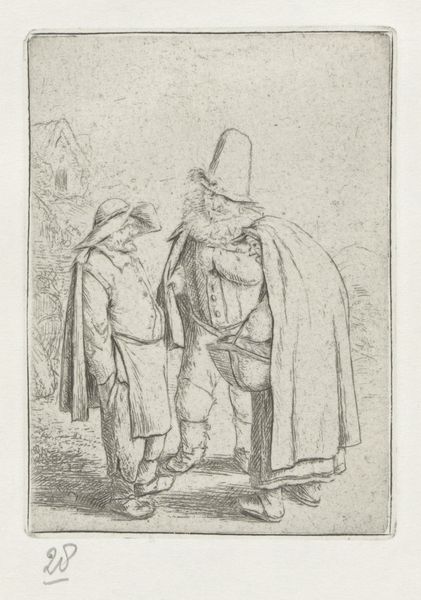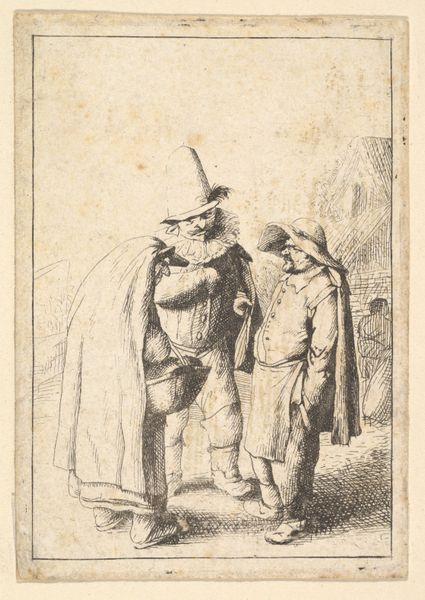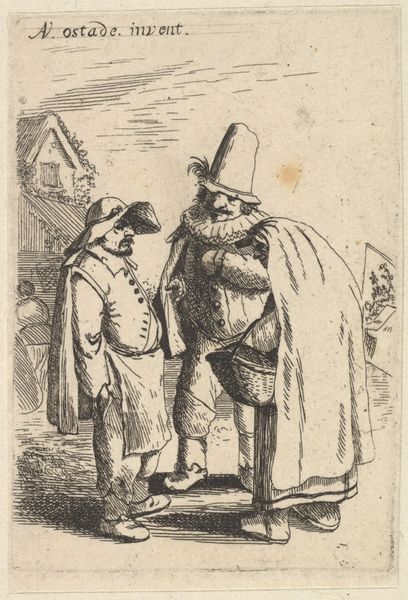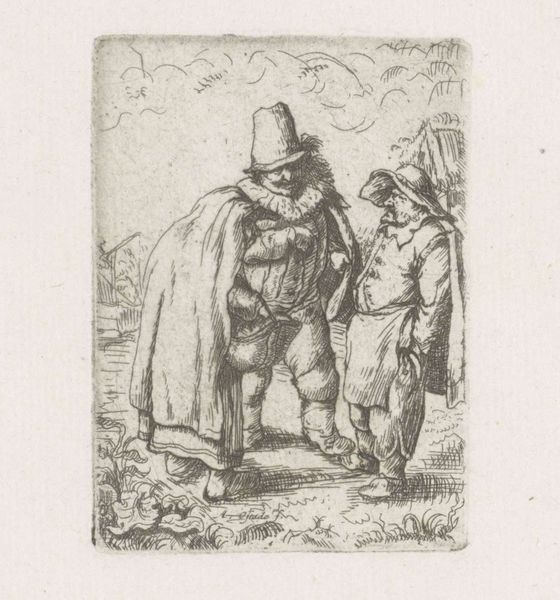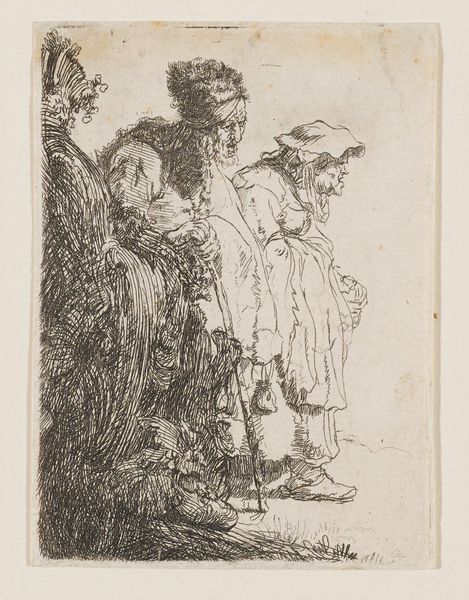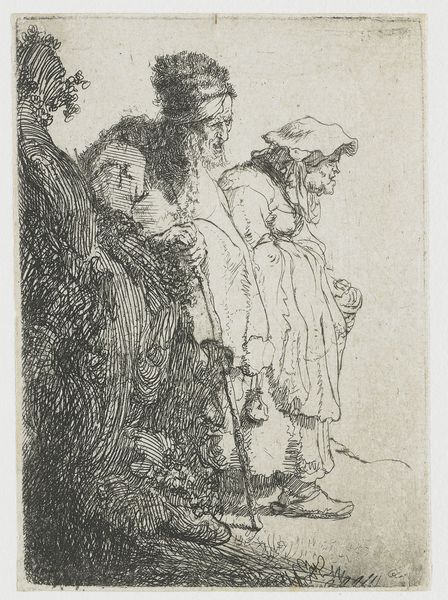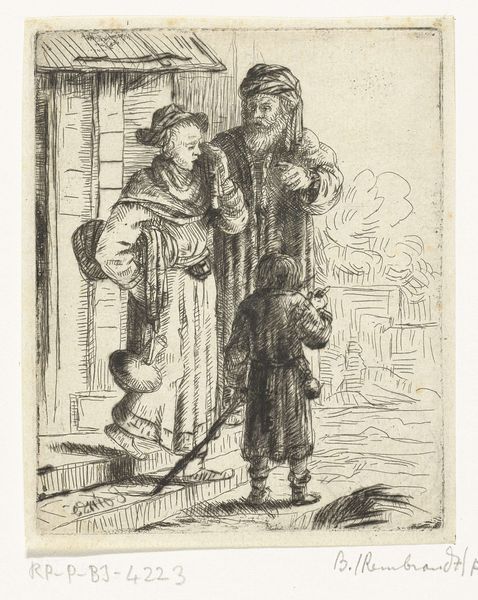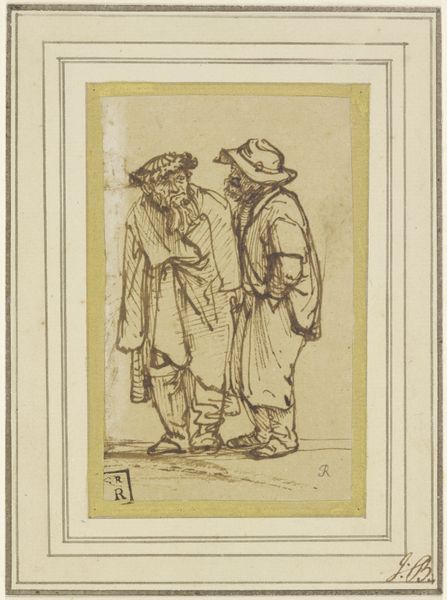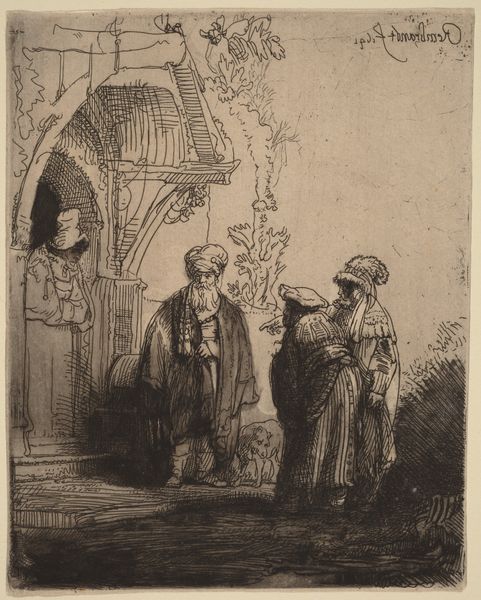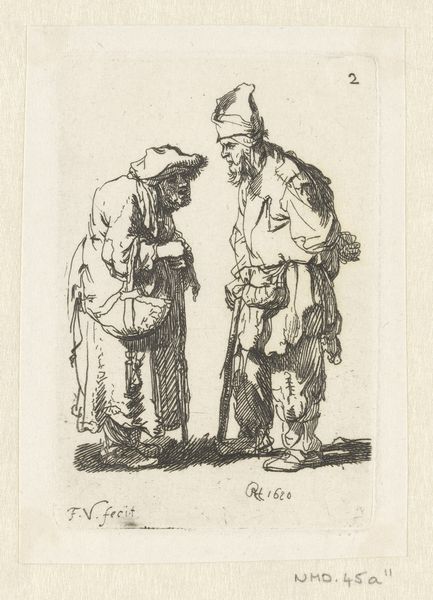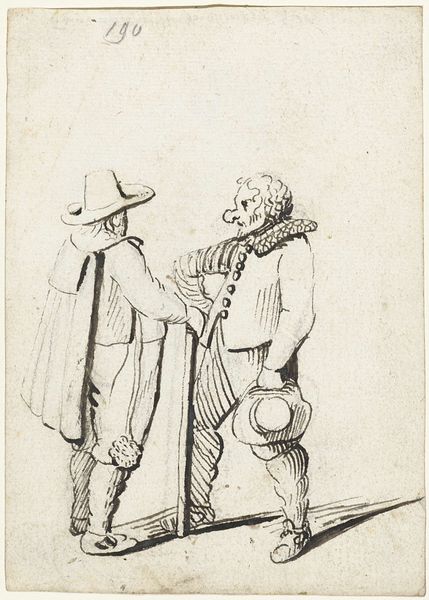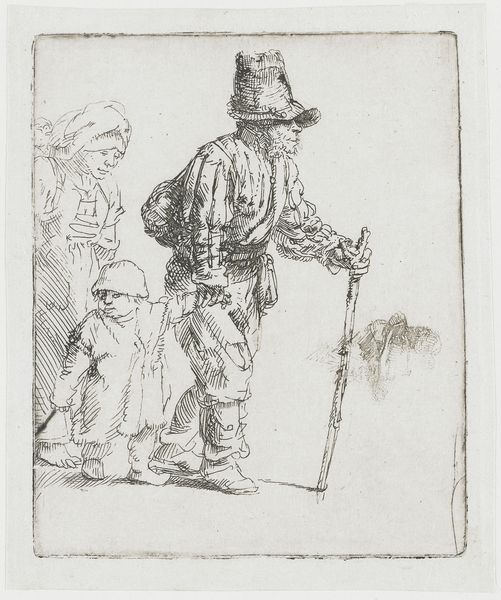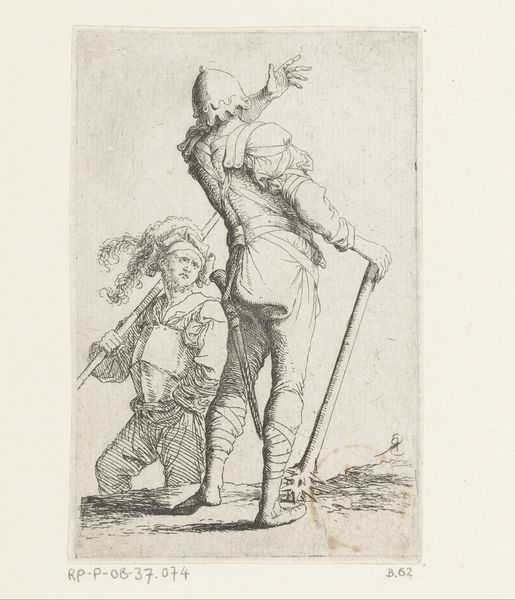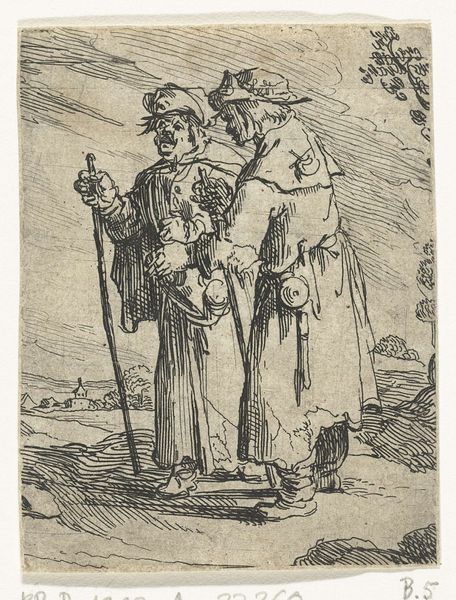
print, etching
#
toned paper
#
light pencil work
#
quirky sketch
#
narrative-art
#
dutch-golden-age
# print
#
pen sketch
#
etching
#
pencil sketch
#
figuration
#
personal sketchbook
#
pen-ink sketch
#
sketchbook drawing
#
genre-painting
#
sketchbook art
#
pencil art
Dimensions: height 88 mm, width 63 mm
Copyright: Rijks Museum: Open Domain
Curator: This etching by Adriaen van Ostade, dating from 1645 to 1649, is titled "Quack Doctor and a Farmer and his Wife." It resides here at the Rijksmuseum. Editor: There's an undeniable aura of folk humor to it. The stark contrast, those exaggerated outfits – it feels almost theatrical, a fleeting stage scene caught on paper. Curator: Indeed. It encapsulates the anxieties and social tensions around healthcare in 17th-century Netherlands. The figure on the right is identifiable through symbols of travelling physicians known as 'quacks.' The figures around him display what were perhaps stereotypical Dutch peasant clothing. Ostade often explored these themes. Editor: Absolutely! Those hats, for instance, aren't simply fashion. The quack’s exaggerated height denotes the hubris associated with medical authority, juxtaposed with what seems like an earnest couple in the background and to the left. And notice how Ostade uses dense crosshatching to emphasize shadow, creating a slightly sinister air around the figure. Curator: This gets at how, in Dutch Golden Age art, genre scenes often veiled critiques of social hierarchies. Ostade uses the popular stereotype of the traveling physician to explore ideas of class, access to health, and the gullibility of rural communities when exposed to early modern fraud. Editor: Exactly! The etching becomes a lens through which to explore not just the individuals depicted, but a larger narrative about trust, deception, and social inequality of early medicine. Look at that basket he’s carrying... brimming with the secrets to conning patients? Curator: Possibly! We can read it now in the context of recent events where skepticism and medical authority clash. The etching highlights not just class dynamics but the vulnerability inherent in unequal power structures. It brings to mind histories of systemic health discrimination, as this work reflects social and political critiques. Editor: A potent reminder that skepticism of authority isn’t new—and the symbols representing it can run very deep! I see how artistic choices echo and reinforce that skepticism today, hundreds of years later. Curator: Ostade provides food for thought about then, and implications now. Editor: Absolutely, a great example of historical art with ongoing cultural implications!
Comments
No comments
Be the first to comment and join the conversation on the ultimate creative platform.
